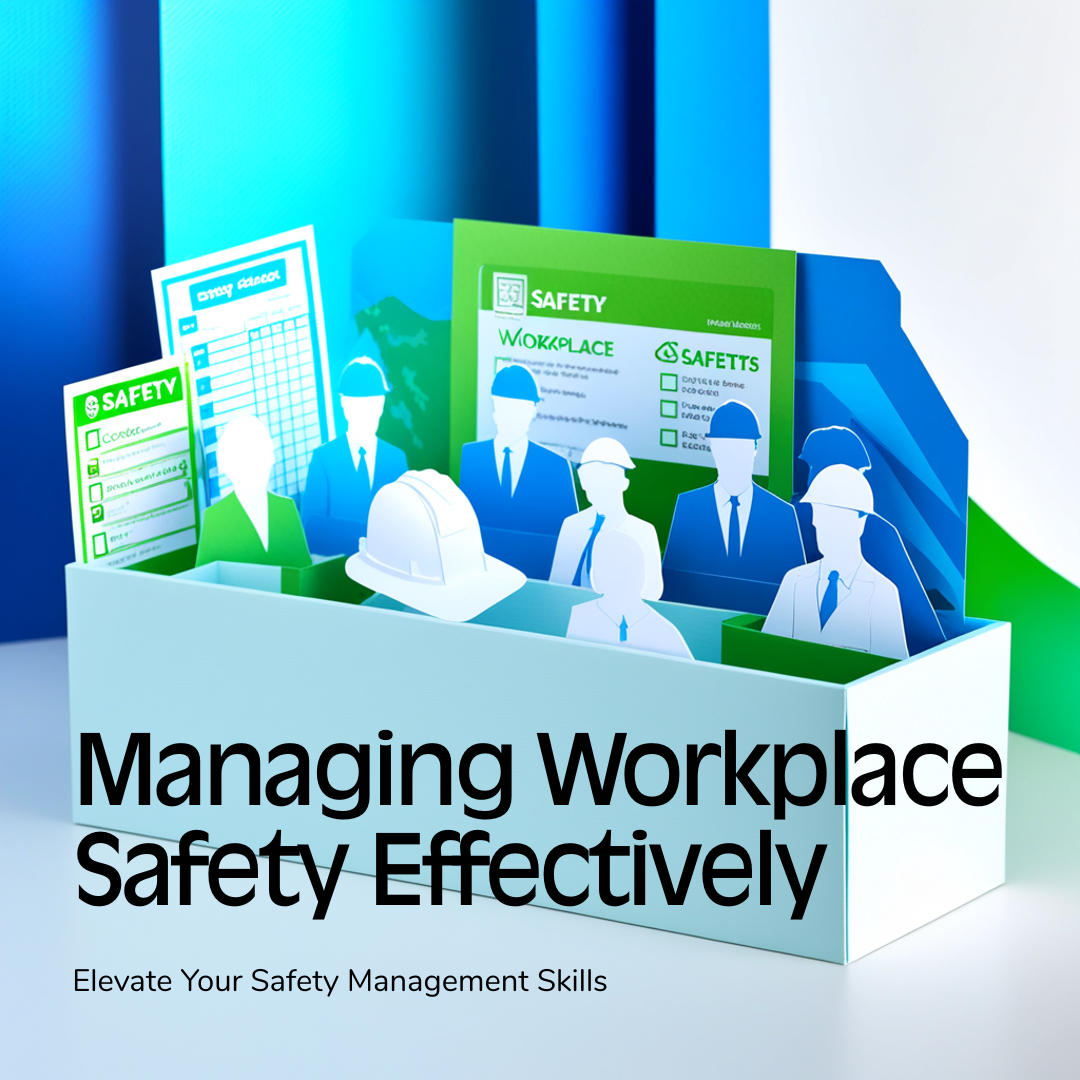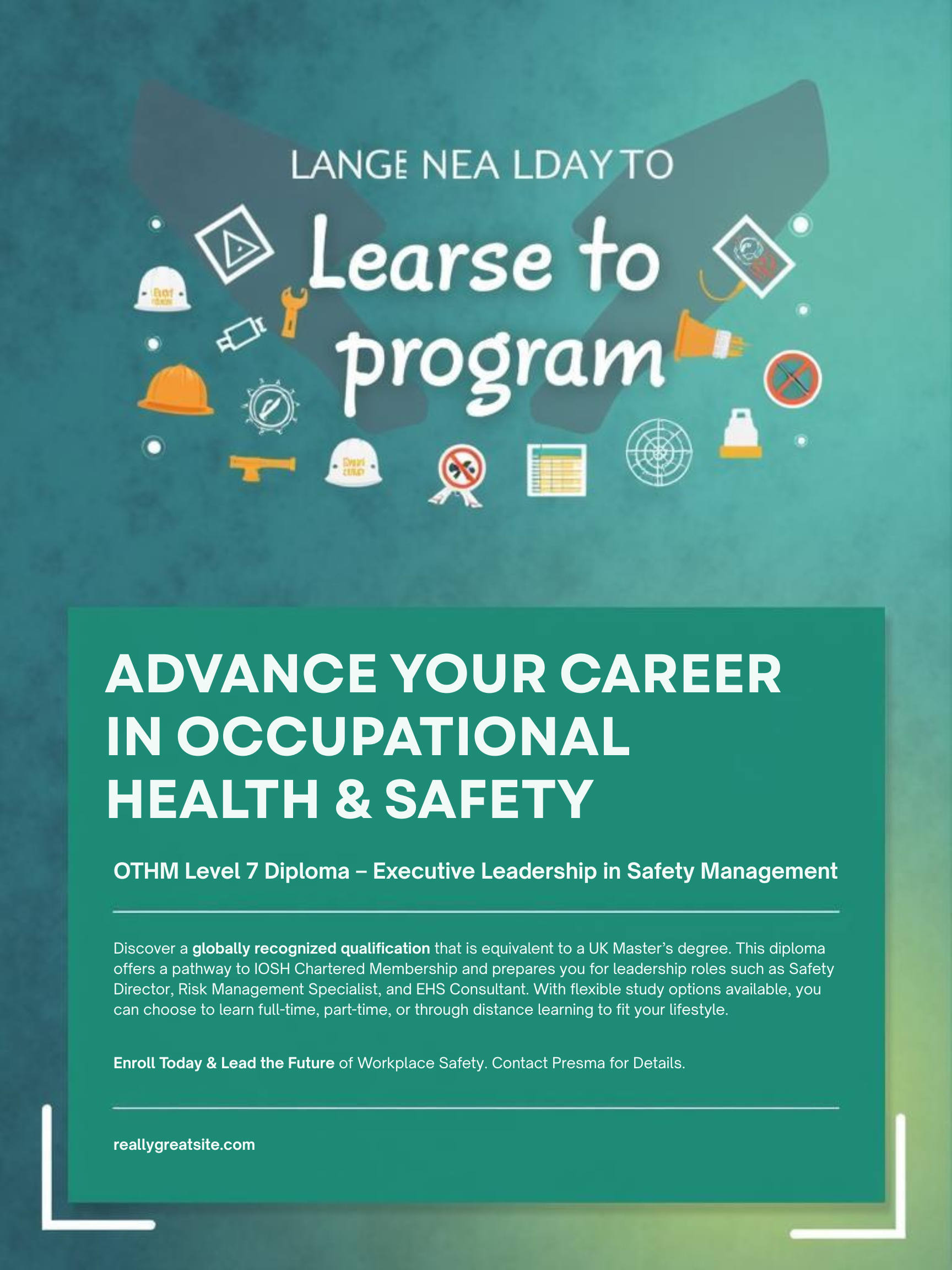Discover OTHM – A Globally Recognized Awarding Body
Level 6 OTHM
Advance Your Career with OTHM Level 6 in Safety
The OTHM Level 6 Diploma in Occupational Health and Safety equips professionals for senior roles requiring leadership in managing workplace health and safety policies. It is an ideal choice for those aiming to enhance their careers, gain recognition as safety professionals, and achieve eligibility for Graduate Membership (Grad IOSH).
Key Benefits
Why Choose the OTHM Level 6 Diploma in Occupational Health and Safety?

The Goal
What You Will Learn
Core principles of health & safety management and implementation
Risk identification, assessment & mitigation techniques
Incident investigation and reporting methods
Workplace hazard control & building a strong safety culture
Health & safety laws, regulations, and compliance
Leadership and management skills for safety roles
Professional growth as a qualified safety practitioner
The Outlook
Who Should Enroll in This Course?
Want to build strong expertise in workplace safety laws, compliance, and risk management.
Aim to achieve professional memberships such as Grad IOSH leading to CMIOSH.
Seek internationally recognized credentials for career growth across industries.
Wish to advance their careers or gain entry into bachelor’s and master’s programs.
Entry Requirements
To enroll in the OTHM Level 6 Diploma, applicants must have either:
1. Academic Qualification
A relevant Level 3 (or equivalent) qualification in health & safety.
2. Work Experience
Mature learners (21+) with at least 2 years of practical HSE experience.
3. Recognized Certifications
Such as NEBOSH, IOSH, NCRQ, or British Safety Council.
Health and Safety
Key Benefits of OTHM Level 6 Diploma
Opens doors to leadership roles across industries including construction, manufacturing, healthcare, and oil & gas.
Recognized as equivalent to a UK bachelor’s degree, accepted globally by safety organizations and employers.
Provides eligibility for Grad IOSH membership, a step toward achieving CMIOSH status.
Bridges academic learning with real workplace safety challenges.
Covers vital topics such as risk management, compliance, hazard control, and safety leadership.
Flexible study options, allowing professionals to balance work and education.
Course Structure & Units
Program Curriculum & Modules
1. Health and Safety Management Principles & Policy (10 credits)
Core concepts of health & safety management
Designing and implementing workplace safety policies
2. Health and Safety Management Practice (10 credits)
Practical application of HSE methods
Effective communication & consultation skills
3. Risk and Incident Management (10 credits)
Hazard identification & risk assessment
Incident investigation & reporting
4. Promoting Health & Safety Culture (8 credits)
Building a positive workplace safety culture
Leadership’s role in promoting safety
Hazard control, ergonomics, and environmental planning
5. Health and Safety Law, Regulation & Influence (7 credits)
Understanding legal frameworks & regulatory bodies
Impact of laws on workplace safety policies
6. Development of the Health & Safety Practitioner (7 credits)
Professional growth & leadership skills
Ethics and best industry practices
Discover OTHM – A Globally Recognized Awarding Body
OTHM Level 7
Take Your Safety Career to the Executive Level
The OTHM Level 7 Diploma in Occupational Health and Safety Management is designed for professionals aiming to lead workplace safety at a strategic level. This globally recognized qualification provides advanced knowledge, managerial expertise, and practical skills to direct high-level safety programs.
With this diploma, you can progress toward roles such as Safety Director, Compliance Executive, or Senior Consultant, gaining both professional credibility and the competencies needed to achieve your career goals.
OTHM Diploma
Why Choose the OTHM Level 7 Diploma?

The Goal
What You Will Learn
Executive Leadership & Policy Development
Strategic Risk Assessment & Corporate Compliance
Designing & Managing OHS Systems
Sustainability, Ethics & Governance in Safety
Psychological & Behavioral Safety Approaches
Advanced Research & Evidence-Based Practice
The Outlook
Equivalency & Recognition
The OTHM Level 7 Diploma in Occupational Health and Safety Management is internationally recognized and considered equivalent to:
UK Master’s Degree in Occupational Health & Safety Management
Postgraduate Diploma in Health & Safety Leadership
Direct Pathway to IOSH Chartered Membership (CMIOSH)
Entry Requirements
Eligibility for Enrollment: Applicants must meet one of the following
1. Academic Qualification
A Level 6 Diploma in Occupational Health and Safety or an equivalent recognized qualification in a relevant field.
Professional Experience
Mature learners (21+) with minimum 3 years of significant professional experience in occupational health and safety roles.
Health and Safety
Key Benefits of OTHM Level 6 Diploma
Prepares you for senior leadership roles in occupational health & safety.
Globally recognized, equivalent to a UK Master’s degree.
Provides eligibility for IOSH Chartered Membership (CMIOSH).
Builds advanced expertise in risk management, compliance & strategic decision-making.
Offers practical industry-based learning for real-world application.
Flexible study options: full-time, part-time, or distance learning.
Course Structure & Units
Program Curriculum & Modules
Health and Safety Management Practice
Strategic development & implementation of workplace safety policies for effective corporate safety programs.Effectiveness of OHS Systems
Evaluation & enhancement of safety frameworks through proven management models.Risk Factors & Strategic Interventions
Identification of high-risk areas and development of long-term risk management strategies.Commitment to Health & Well-Being
Policies addressing psychosocial factors to promote employee mental health & well-being.Sustainability & Ethics in Practice
Building ethical, sustainable safety systems aligned with global standards.Advanced Research Methods
Independent safety assessments and research to strengthen workplace safety policies.
Advance Your Safety Leadership with Presma
The OTHM Level 6 & 7 Diplomas in Occupational Health and Safety Management offer significant career benefits for professionals. These qualifications provide advanced skills and recognition, enabling executive-level OHS professionals to achieve career excellence. Presma delivers industry-leading training and expert guidance through internationally recognized programs, helping you reach your professional goals.
Enroll Today and Lead the Future of Workplace Safety
For admissions, course fees, and enrollment details, contact Presma today. Take the first step toward executive leadership in health and safety and start your journey with us.
Career Pathways After Completing the Diploma
The OTHM Level 6 & 7 Diplomas prepare professionals for senior and executive roles in occupational health and safety across various industries.
Industries You Can Work In:
Construction & Engineering
Oil & Gas
Aviation & Logistics
Manufacturing & Heavy Industries
Healthcare & Pharmaceuticals
Government Regulatory Bodies
Corporate Risk & Compliance
Potential Job Roles:
Health & Safety Director
OHS Policy Consultant
Risk Management Specialist
Senior Compliance Officer
Corporate Health & Safety Manager
Environmental Health & Safety (EHS) Consultant
Graduates of this prestigious program can secure leadership positions globally and gain recognition as top-tier safety professionals.
